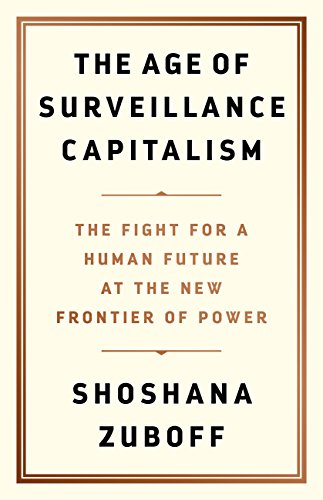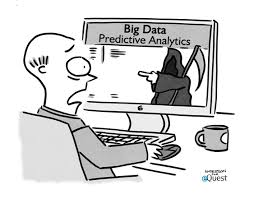 Branded. Here’s something I reported on Facebook a couple of days ago. Based on my internet habits and tastes, FB’s algorithms had decided I was an aging proto-hipster who snored. So I should be a sucker for ‘soft-leather sandals,’ right? Not to mention a mini-CPAP device that would end my snoring forever.
Branded. Here’s something I reported on Facebook a couple of days ago. Based on my internet habits and tastes, FB’s algorithms had decided I was an aging proto-hipster who snored. So I should be a sucker for ‘soft-leather sandals,’ right? Not to mention a mini-CPAP device that would end my snoring forever. 
And what happens, I asked, should I decide to run for PM in Canada? The media, soon in possession of Big Data knowledge products regarding yours truly, would advise the electorate to forget about it. He’s a snorer, they’d say, and his wife might strangle him to death on any given night, and where would that leave the nation, eh? Jasus.
Algorithmically engineered. Aside from the ads, I noticed how a late ’50s to early ’70s YouTube filter bubble, plus my innate inertia, was retarding my musical education even as it no doubt added to my apparent age. I mentioned this to a friend, who said listen to Larkin Poe, so I did.
The very next day Big Data’s algorithms proposed, for my reading pleasure, The Art of Dying. I was grooving away on Miles Davis’ Live/Evil when they slipped a lecture by that book’s author into YouTube’s stack of right-hand-panel suggestions. It appeared right there between albums by 1950s jazz artist Kenny Burrell and the modern blues duo Larkin Poe.
I reported this sighting to the same friend who only the day before had recommended Larkin Poe. “The same near-death-experience neuropsychiatrist routinely pops up on my feed,” he told me. “This is just more demographic targeting – jazz and blues equals cool elders with open minds.” And, actuarily speaking, with not that many years remaining.
 Whoa! This one tiny instance, so intimate in nature and so quick off the mark, was somehow more chilling than the sum of damning evidence marshaled in the 670 pages of Zuboff’s Age of Surveillance Capitalism. Here was immediate evidence of machinations on the part of largely unknown forces, the shadowy entities that lurk behind the sleek surfaces of all the gadgetry and mod-coms.
Whoa! This one tiny instance, so intimate in nature and so quick off the mark, was somehow more chilling than the sum of damning evidence marshaled in the 670 pages of Zuboff’s Age of Surveillance Capitalism. Here was immediate evidence of machinations on the part of largely unknown forces, the shadowy entities that lurk behind the sleek surfaces of all the gadgetry and mod-coms.
Though I am pleased to think that clairvoyant algorithims weren’t singling me out personally in this matter. That I was instead merely a statistical construct, part of a mob of likely Art of Dying buyers. 
How easy it is to sell out. Hey, I wonder how I can enlist such algorithms on behalf of my MAGIC CIRCLES novels. Who’s my demographic?
Yesterday’s news. Whatever. That’s really yesterday’s news. Big Data, employing ever bigger piles of data and ever-more sophisticated predictive-product mining techniques, can now target individual personalities in real time — reading, even inciting, one passing mood or another in the service of their clients. So they could assess my general demeanor the morning after an epic happy hour and conclude they’d best pimp The Art of Dying right away on every app on every one of my gadgets, and maybe toss in a few ads for undertakers as well.
Know thyself. And know this: Big Data often knows more about you than you do yourself. Imagine your behavior is being engineered by a cabal comprising Heinrich Himmler, the ad industry, a gang of red-hot psychotherapists, and your friendly neighborhood priest prepared to betray any confidence for a suitable consideration. Jasus, jasus, eh? Already, as Shoshana Zuboff reports in The Age of Surveillance Capitalism, our puppetmasters speak in terms of “behavioral micro-targeting… influencing voters [for example] based not on their demographics but on their personalities.” Complementing such approaches we have “sentiment analysis,” “emotion analytics,” and “affective computing” reading facial expressions, voices, body language and brains, “often in combination with imperceptibly small, unobtrusive cameras.”
Quote du jour. The evidence “points to the seriousness and complexity of the backstage effort to strengthen [emotional contagion] by specifying motivational conditions at a granular level. It reveals not only the scale and scope of Facebook’s behavioral surplus but also the corporation’s interest in leveraging its surplus to precisely determine the ebb and flow of a user’s predisposition for real-time targeting by the branded cues that are most likely to achieve guaranteed outcomes.” (Age of Surveillance Capitalism, p. 307)
Nowhere to run to, nowhere to hide. Utterly transparent to the Powers That Be, whoever or whatever these might be.
“Hey!” says Sara. “I thought you were going to take the garbage out.”
The tinge of disgruntlement in her voice may relate to rumors that someone snored half the night just past.

